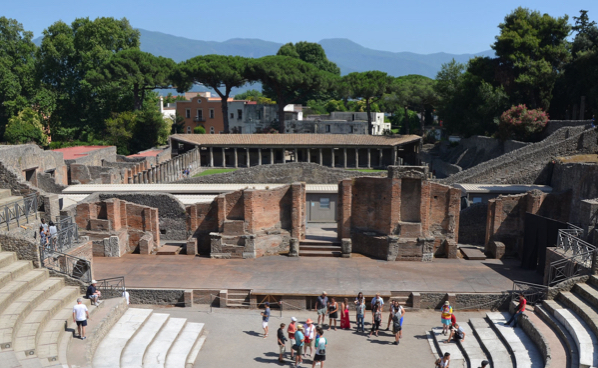Roman tiles are helping the ancient city of Pompeii power an entire villa. The idea of the project is to install solar panels designed to mimic ancient Roman terracotta tiles on the roof of one of Pompeii’s most famous villas. These solar panels contain photovoltaic cells and are flat, lying between traditional ceramic curved tiles, allowing the UNESCO World Heritage Site to maintain its aesthetic integrity while generating clean energy.
The energy produced by these panels is used to power special LED lights that illuminate the villa’s frescoes without damaging the painted surfaces. The project is still in its early stages, but it has the potential to serve as a model for other historic city centers in Italy and beyond, demonstrating how emerging technologies can be harmoniously blended with cultural heritage to promote sustainability.
KnowALLedge Plus:
>Once a thriving and sophisticated Roman city, Pompeii was buried under ash and pumice after the catastrophic eruption of Mount Vesuvius in southern Italy in 79 A.D.
>The rediscovery of Pompeii began in 1748 when construction workers were digging a foundation for a summer palace for the King of Naples, Charles III, in the town of Resina, under the direction of the Spanish military engineer Rocque Joaquin de Alcubierre.
>The solar panels cover 70 square meters of roof, produce a maximum of 13 kilowatt-hours, and are connected to an eco-friendly sodium battery. Despite being slightly less efficient than traditional solar panels, they heat up less in summer, which compensates for the nominal loss of efficiency.
